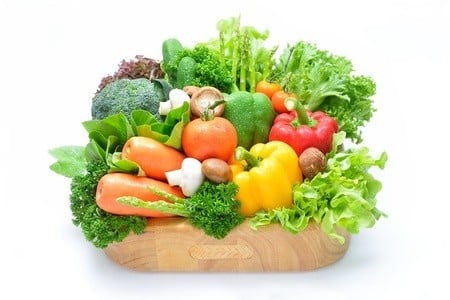I know I’m a little late to the game here, but I actually just found out today via an article I stumbled upon that September is National Food Safety Education month! I personally love food so much, it’s undoubtedly one of my best friends. So, I was surprised to see that it isn’t more well known that September is National Food Safety Education Month. I myself strive to learn more about food safety and preparation, especially because I use a lot of fresh foods in my diet, such as vegetables, fruit, dairy and meat. One wrong food storage move, or if food is set out for just one minute too long, and it can have a terrible impact on you or the people you’re preparing the food for.
If you work in a restaurant or commercial kitchen, you’re probably already familiar with what I’m about to share. But for our other readers who may need a refresher about food safety, here’s a list of basic food safety facts from the USDA to keep your meals fresh, and keep you free from food-borne illness:
- Clean — Wash hands and surfaces often.
- Separate — Don’t cross-contaminate.
- Cook — Cook to the right temperature.
- Chill — Refrigerate promptly.
Shopping
- Purchase refrigerated or frozen items after selecting your non-perishables.
- Never choose meat or poultry in packaging that is torn or leaking.
- Do not buy food past “Sell-By,” “Use-By,” or other expiration dates.
Storage
- Always refrigerate perishable food within 2 hours—1 hour when the temperature is above 90 °F (32.2 ºC).
- Check the temperature of your refrigerator and freezer with an appliance thermometer. The refrigerator should be at 40 °F (4.4 ºC) or below and the freezer at 0 °F (-17.7 ºC) or below.
- Cook or freeze fresh poultry, fish, ground meats, and variety meats within 2 days; other beef, veal, lamb, or pork, within 3 to 5 days.
- Perishable food such as meat and poultry should be wrapped securely to maintain quality and to prevent meat juices from getting onto other food.
- To maintain quality when freezing meat and poultry in its original package, wrap the package again with foil or plastic wrap that is recommended for the freezer.
- Canned foods are safe indefinitely as long as they are not exposed to freezing temperatures, or temperatures above 90 °F. If the cans look ok, they are safe to use. Discard cans that are dented, rusted, or swollen. High-acid canned food (tomatoes, fruits) will keep their best quality for 12 to 18 months; low-acid canned food (meats, vegetables) for 2 to 5 years.
Preparation
- Always wash hands with warm water and soap for 20 seconds before and after handling food.
- Don’t cross-contaminate. Keep raw meat, poultry, fish, and their juices away from other food. After cutting raw meats, wash cutting board, utensils, and countertops with hot, soapy water.
- Cutting boards, utensils, and countertops can be sanitized by using a solution of 1 tablespoon of unscented, liquid chlorine bleach in 1 gallon of water.
- Marinate meat and poultry in a covered dish in the refrigerator.
Thawing
- Refrigerator: The refrigerator allows slow, safe thawing. Make sure thawing meat and poultry juices do not drip onto other food.
- Cold Water: For faster thawing, place food in a leak-proof plastic bag. Submerge in cold tap water. Change the water every 30 minutes. Cook immediately after thawing.
- Microwave: Cook meat and poultry immediately after microwave thawing.
Cooking
Cook all raw beef, pork, lamb and veal steaks, chops, and roasts to a minimum internal temperature of 145 °F (62.8 ºC) as measured with a food thermometer before removing meat from the heat source. For safety and quality, allow meat to rest for at least three minutes before carving or consuming. For reasons of personal preference, consumers may choose to cook meat to higher temperatures.
Ground meats: Cook all raw ground beef, pork, lamb, and veal to an internal temperature of 160 °F (71.1 ºC) as measured with a food thermometer.
Poultry: Cook all poultry to an internal temperature of 165 °F (73.9 °C) as measured with a food thermometer.
Serving:
- Hot food should be held at 140 °F (60 °C) or warmer.
- Cold food should be held at 40 °F (4.4 ºC) or colder.
- When serving food at a buffet, keep food hot with chafing dishes, slow cookers, and warming trays. Keep food cold by nesting dishes in bowls of ice or use small serving trays and replace them often.
- Perishable food should not be left out more than 2 hours at room temperature—1 hour when the temperature is above 90 °F (32.2 ºC).
Leftovers
- Discard any food left out at room temperature for more than 2 hours—1 hour if the temperature was above 90 °F (32.2 ºC).
- Place food into shallow containers and immediately put in the refrigerator or freezer for rapid cooling.
- Use cooked leftovers within 4 days.
- Reheat leftovers to 165 °F (73.9 °C).
Refreezing
Meat and poultry defrosted in the refrigerator may be refrozen before or after cooking. If thawed by other methods, cook before refreezing.
Reference:
“Basics for Handling Food Safely.” Food Safety and Inspection Service. United States Department of Agriculture, n.d. Web. 15 Sept. 2016.

